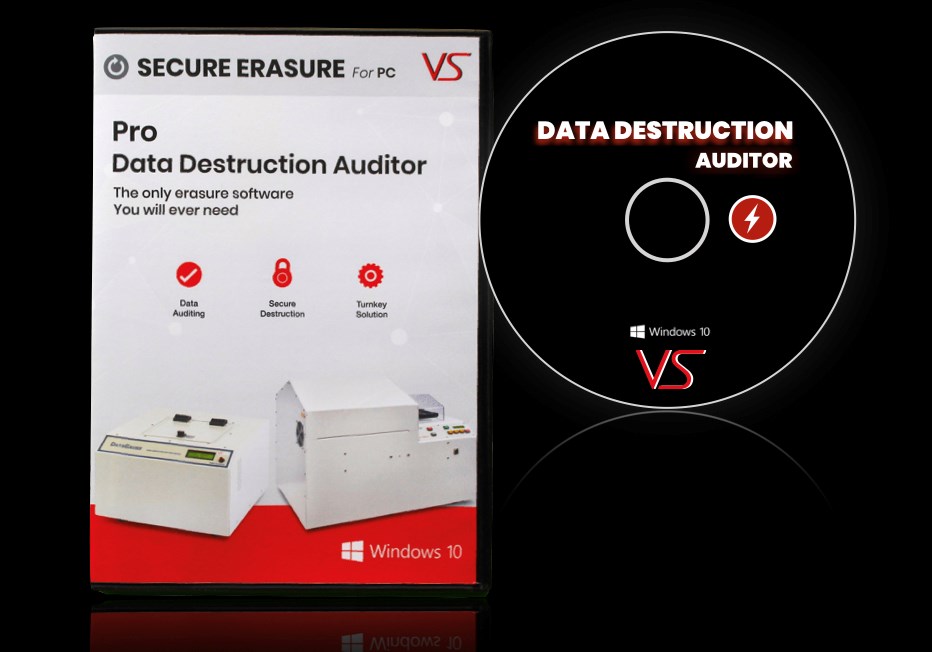Why Data Destruction is a Vital Element of Comprehensive Cyber Security
Why Data Destruction is a Vital Element of Comprehensive Cyber Security
Blog Article
The Value of Effective Information Destruction Practices in Shielding Sensitive Information and Ensuring Computer System Security
In a period where data violations are progressively common, the significance of reliable information destruction techniques can not be overemphasized. Organizations face significant threats when sensitive info is improperly gotten rid of, possibly causing unauthorized access and serious monetary repercussions. Implementing robust data devastation techniques not only mitigates these risks yet also lines up with legal compliance needs, guaranteeing that organizations support their credibility and foster client trust fund. However, the concern stays: what certain methods can be utilized to improve these practices, and how can organizations properly integrate them right into their total cybersecurity framework?
Understanding Information Devastation
Understanding data destruction is important in today's electronic landscape, where delicate information can easily be compromised. Reliable data destruction entails not merely making certain but removing data that information is irretrievable via thorough methods. This process is essential for companies that deal with private customer information, copyright, or interior documents, as any violation can cause extreme economic and reputational repercussions.
Information destruction includes numerous methods, including shredding physical media, degaussing magnetic storage devices, and using software-based services that overwrite information multiple times. Each technique serves a specific objective and should align with the level of sensitivity of the information being gotten rid of. Physical destruction is frequently preferred for tough drives having highly personal data, while software application techniques could suffice for much less delicate info.
Furthermore, sticking to market standards and laws, such as the General Data Security Policy (GDPR) or the Health Insurance Coverage Portability and Responsibility Act (HIPAA), is vital for compliance and to mitigate legal threats. Organizations needs to establish a robust information damage plan, train workers on best practices, and regularly examine their treatments to make sure that all delicate details is gotten rid of securely and successfully.
Risks of Inadequate Practices
Insufficient information devastation methods subject organizations to significant dangers that can have far-ranging consequences. When sensitive details is not correctly disposed of, it remains vulnerable to unapproved gain access to, which can bring about data violations and identification theft. Such cases not just jeopardize the protection of individuals yet additionally tarnish the company's online reputation, leading to a loss of customer count on and possible financial repercussions.
Furthermore, governing conformity is significantly rigorous in several markets. Failing to follow information damage policies can lead to hefty fines and lawful actions against organizations. These fines can stress funds and draw away attention from core business procedures.
Additionally, the misuse of recurring information can result in copyright burglary or business espionage, threatening affordable advantages (data destruction). The impact of inadequate information damage extends past instant financial losses; it can additionally cause long-lasting damages to brand name integrity and market placement

Organizations have to identify that information safety and security is not entirely about stopping breaches; it also incorporates the accountable management of information throughout its lifecycle. Overlooking effective information destruction protocols can have devastating implications, underscoring the need for durable a fantastic read procedures to alleviate these risks.
Finest Practices for Data Damage
Implementing efficient information damage techniques is essential for guarding delicate info and maintaining compliance with regulatory standards. Organizations must take on a multi-faceted strategy to guarantee that data is irretrievable, consequently stopping unauthorized accessibility and prospective breaches.
First, information should be classified based on sensitivity, permitting organizations to apply ideal devastation approaches tailored to the degree of threat. For digital data, making use of software-based data-wiping devices that follow industry criteria can efficiently overwrite existing information. Physical damage techniques, such as shredding or degaussing, are critical for devices that keep delicate details, guaranteeing complete removal.
Establishing a clear data retention policy is essential, describing how much time different kinds of info should be kept before devastation. Normal audits of data storage systems are likewise required to determine unnecessary or out-of-date information needing removal.
Additionally, training staff members on the value of information devastation and the details protocols to comply with fosters a culture of security within the organization. Ultimately, maintaining paperwork of information damage refines supplies accountability and sustains conformity with outside regulations and internal policies. By sticking to these best practices, organizations can considerably mitigate the threats connected with information direct exposure.
Legal and Conformity Factors To Consider

Failure to adhere to these regulations can cause serious penalties, including substantial penalties and reputational damages. Organizations has to execute a durable data devastation policy that lines up with these legal frameworks and provides clear guidelines on the correct techniques of information disposal, whether physical shredding or electronic wiping.
Furthermore, keeping paperwork of information damage activities is important for showing compliance throughout audits or examinations. By prioritizing legal and conformity factors to consider, organizations can improve their data protection position and foster depend on with clients and stakeholders, inevitably adding to an extra secure information monitoring setting.
Advantages of Effective Data Destruction
Reliable data devastation methods expand past mere compliance; they use significant advantages to companies that prioritize them. By guaranteeing that sensitive information is irretrievably destroyed, organizations reduce the threat of information violations and the prospective monetary effects connected with them. This proactive technique not just safeguards against unauthorized access however also enhances the general trustworthiness of the organization in the eyes of stakeholders and customers.
Executing robust data devastation techniques, such as physical devastation of storage space tools or advanced data cleaning methods, contributes to the strengthening of a company's cybersecurity posture. data destruction. It minimizes the likelihood of intellectual home theft and shields proprietary information, thus maintaining an one-upmanship in the marketplace

Verdict
In final thought, efficient data devastation techniques are necessary for securing sensitive info and boosting total computer system safety. Eventually, a dedication to durable information damage approaches promotes a society of responsibility, consequently reinforcing an organization's cybersecurity position and keeping client depend on.

Report this page